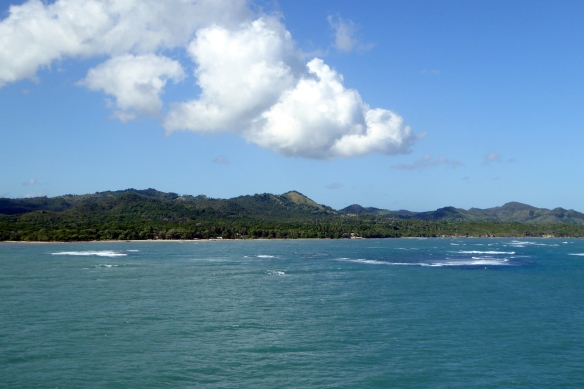
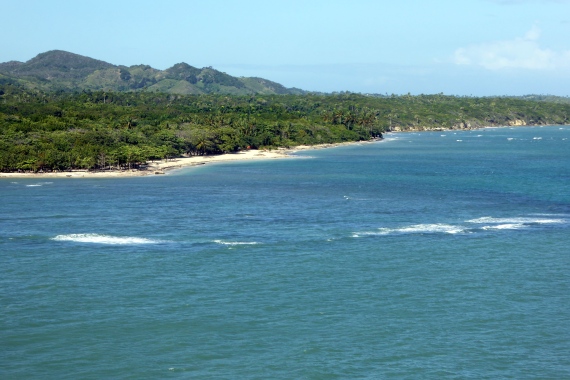


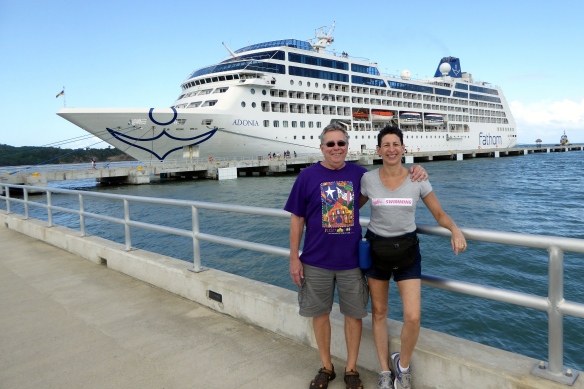 As Adonia cruised into Amber Cove, Bruce and I admired the gorgeous tropical scenery of Puerto Plata, Dominican Republic (aka “the DR”). We were eager to start the day, so we were among the first to disembark after our arrival. It was too early to board the bus for Chocal; so, we explored Amber Cove, the $90 million-dollar port completed a year ago by Carnival Cruise Lines. I took several photos of the attractive complex; however, I am eager to write about Chocal. Amber Cove will have to wait…
As Adonia cruised into Amber Cove, Bruce and I admired the gorgeous tropical scenery of Puerto Plata, Dominican Republic (aka “the DR”). We were eager to start the day, so we were among the first to disembark after our arrival. It was too early to board the bus for Chocal; so, we explored Amber Cove, the $90 million-dollar port completed a year ago by Carnival Cruise Lines. I took several photos of the attractive complex; however, I am eager to write about Chocal. Amber Cove will have to wait…
In my first post about Fathom Impact Travel, I mentioned we would be helping Chocal with their cacao and chocolate production. It is a women’s cooperative currently employing thirty women (as well as some of their adult children); however, their goal is to grow the cooperative and thrive. Helping them to succeed will enable Chocal to hire more local women, and bring more income into their community.
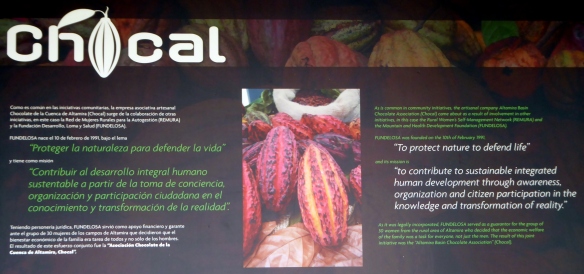
During the bus ride to Chocal, Leurys, a representative of IDDI (Dominican Institute for Integral Development), prepared us for our upcoming morning at the cacao plantation and chocolate factory. In addition to learning about Chocal’s creation in 2008 (detailed in the photo above), the entire chocolate-making process was explained, from cacao seedling to chocolate bar. We would be contributing to many of those processes to help increase production.
I was curious how these women learned the business of producing chocolate. We were told a consultant from Switzerland was hired to teach them the entire process, and educate them on the special equipment needed to process the cacao. After the co-op obtained a loan from the U.S.A., the machines were built to specification and delivered to the factory.
Chocal is located high up in the mountains in the town of Altamira (Spanish for “high view”) where cacao grows naturally and abundantly, along with mango and other tropical fruits. Many local farmers belong to a farming cooperative and make their living by harvesting their cacao and selling the cacao beans.
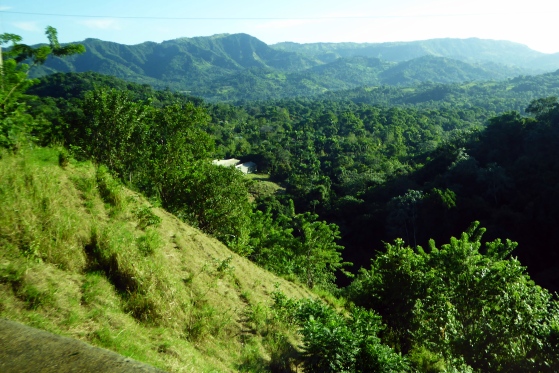
Having Chocal in their community provides another buying source for their cacao beans. When Chocal is in need of more cacao than their own trees produce, they buy from the farmers in their community. In turn, when those farmers need additional cacao trees for their land, they can purchase young trees from Chocal at cost. The farmers provide compost for the seedlings, and pay the equivalent of ten cents for each two-foot tall tree they purchase. This covers the cost of the bag, and the (free) labor is provided by us volunteers. IDDI representatives work with Fathom and Chocal to facilitate the volunteer process.
It was in the nursery where we ended each of our three volunteer days at Chocal; however, it is where I will begin our tour here, since this is the origin of chocolate. It all begins with cacao.

Once the teams were in place at the bag filling station, bag brigade, and seedling planting station; we rocked! I never noted how much time we spent in production mode (perhaps one hour); but, whatever the time period, we produced. Our bus load of +/- thirty volunteers filled bags and planted 504 seedlings our first day, and 584 the second day. Our group had less time to work on the third day; however, we still managed to complete 403 bags. That’s teamwork!
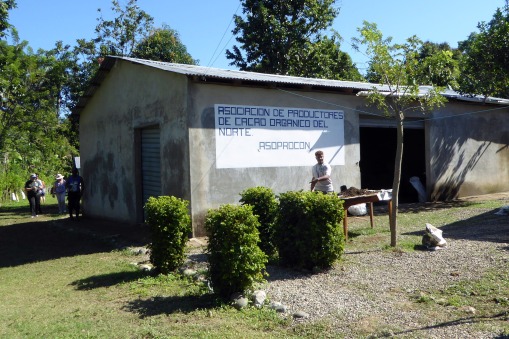
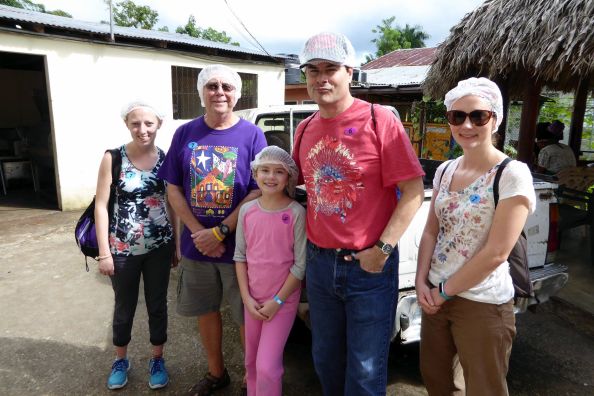
We met Jessica, age 9, and her dad, Len, during the first night aboard ship. They were wonderful table mates, and became fast friends. Erin and Erin were college friends who we met during the bus ride.
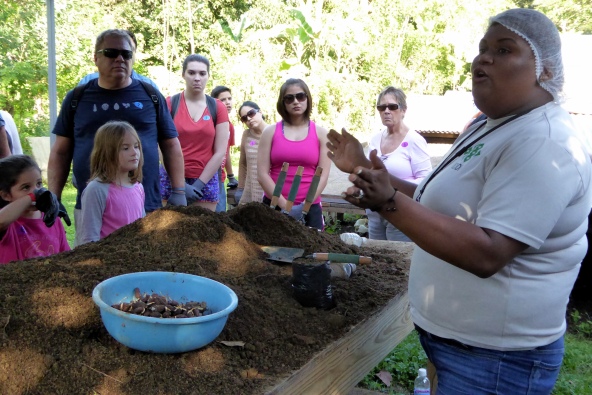
Leurys explained how the bags should be filled to the top and compacted. Next, a hole is inserted in the soil and a cacao seedling is planted.

Carola (right), helps plant the seedlings. She was our table mate on another night aboard ship.
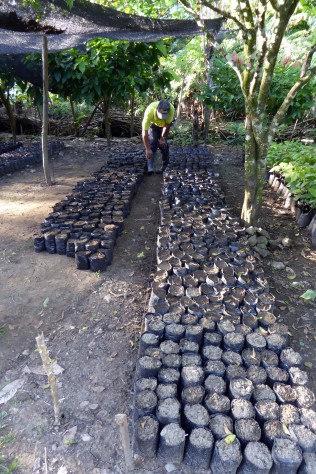
Gumarcindo lines up the seedlings on our first day. Our group planted 504!
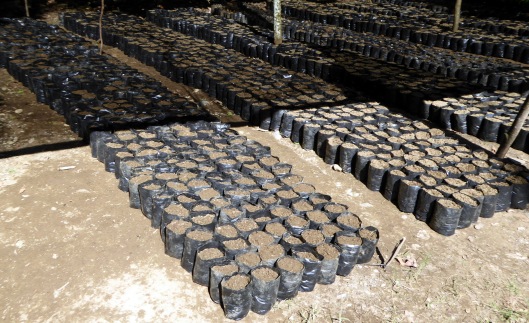
By Day 3, Gumarcindo was trying to figure out where to put them all!
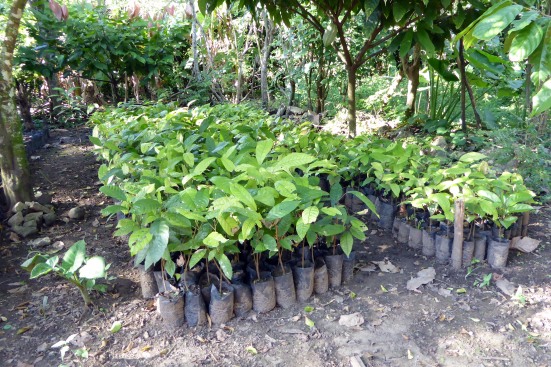
These little cacao trees will be sold to area farmers at cost– about ten cents per tree.
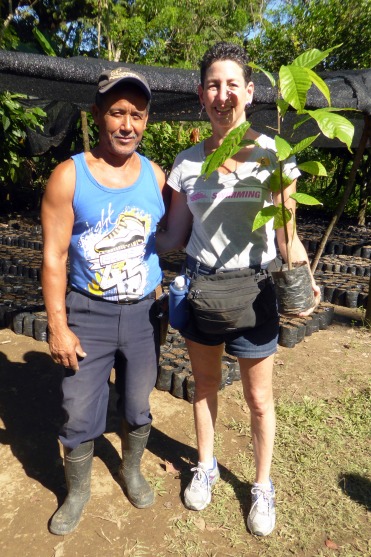
My new amigo, Gumarcindo.

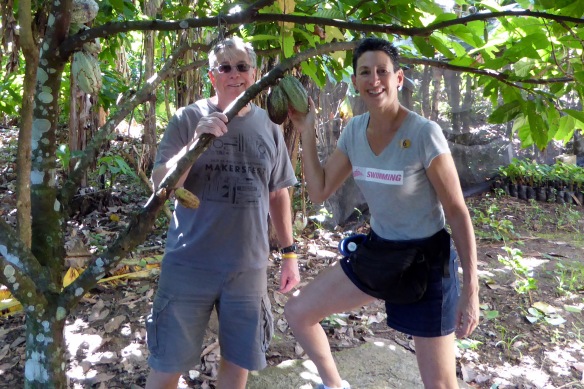
After our work was completed, Gumarcindo, the nursery manager, showed us how the beans are processed at the nursery, before they are taken next door to the factory.
First, the cacao pods are carefully removed from the trees, and then manually cut open within 7-10 days of harvest. The beans and pulp are scooped out from the pod and placed into the top level of boxes in the fermenting room. After two days at the top level, they are dumped down into the middle level for another two days of fermenting. Finally, they are transferred into the bottom level where they ferment for an additional two days before being spread out in the sun to dry.

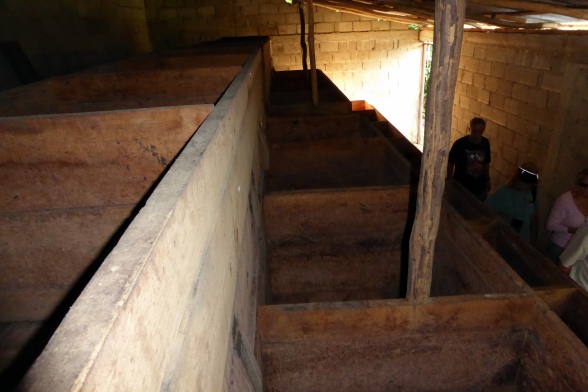
Although many cacao growers skip the fermenting step before drying their beans, the Swiss consultant explained to the co-op members that fermented beans would make for better-tasting chocolate.
After the fermentation process is complete, the beans are left in the sun to dry to reduce the moisture content from about 60% to 7.5%. If it looks like it’s going to rain, the roofs are pulled over the bean tables to keep the beans dry.
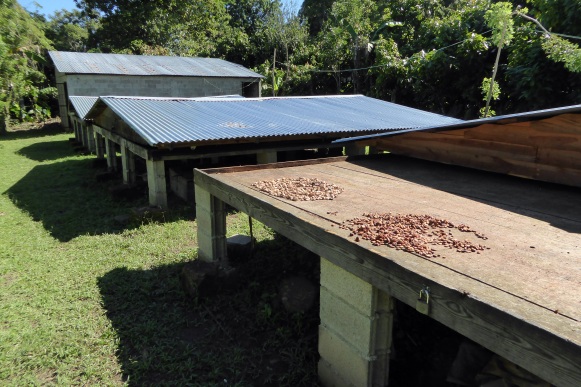
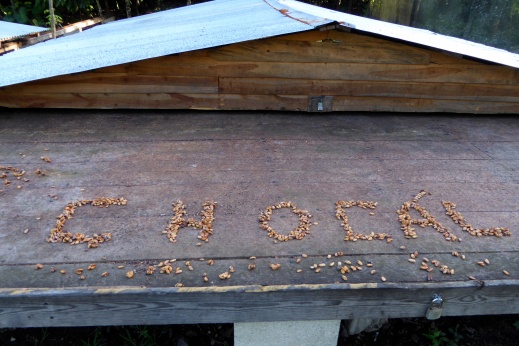
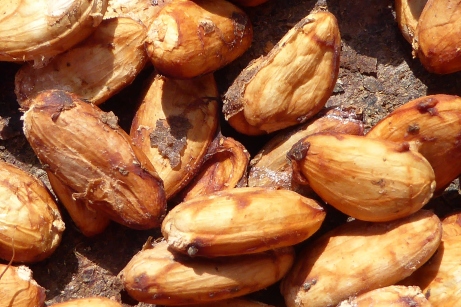
The drying process is done carefully and slowly to ensure that off-flavors are not developed. If the beans are dried too quickly, some of the chemical reactions started in the fermentation process are not allowed to complete their work. This causes the beans to become acidic and taste bitter. If the drying is done too slowly, however, mold can develop.
To ensure an even drying process, the beans are spread out in the sun and raked or turned periodically. In all, the drying process takes about six days.
Once dried, the beans are packed in large sacks and stored in Chocal’s warehouse that is kept cool and dry. Under these conditions, the cacao beans can be stored for years.
My next post will be about those cacao beans that are processed to become delicious chocolate!
Meanwhile, as our tour came to an end, we said “Hasta manana!” (See you tomorrow!”) to Gumarcindo and the IDDI facilitators helping out at the nursery. All of them gave us a funny look, because nobody comes back tomorrow if they are on a Fathom cruise. As a matter of fact, the Fathom website doesn’t allow for registering for multiple Impact activities at the same location. Besides, most people opt for a variety of volunteer opportunities rather than just one. Not me. Between my passion for all things chocolate and my strong belief in the women’s co-op; I was determined to spend as much time as possible at Chocal. Bruce was fine with it, so I called Fathom’s headquarters as soon as we signed up for the cruise and pleaded my case. Happily, the gal I spoke with empathized and did a manual override of their computer system to sign us up for to volunteer at Chocal all three full days in the DR.
When Bruce and I returned the following day, we found Gumarcindo and greeted him with, “Hola, Gumarcindo! Que lo que?” (“Hello, Gumarcindo! What’s up?”) (“Que lo Que” is a special DR greeting that is very much appreciated by the locals, so we enjoyed using that greeting often!)
A big grin and a fist bump greeted us back!
On the third day, I was sad to have to tell Gumarcindo, “No hasta manana.” I didn’t know if or when we would ever be back…
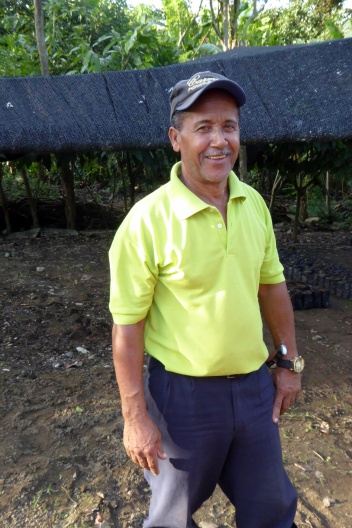
Next up:
CHOCAL: MANY HANDS MAKE LIGHT WORK






